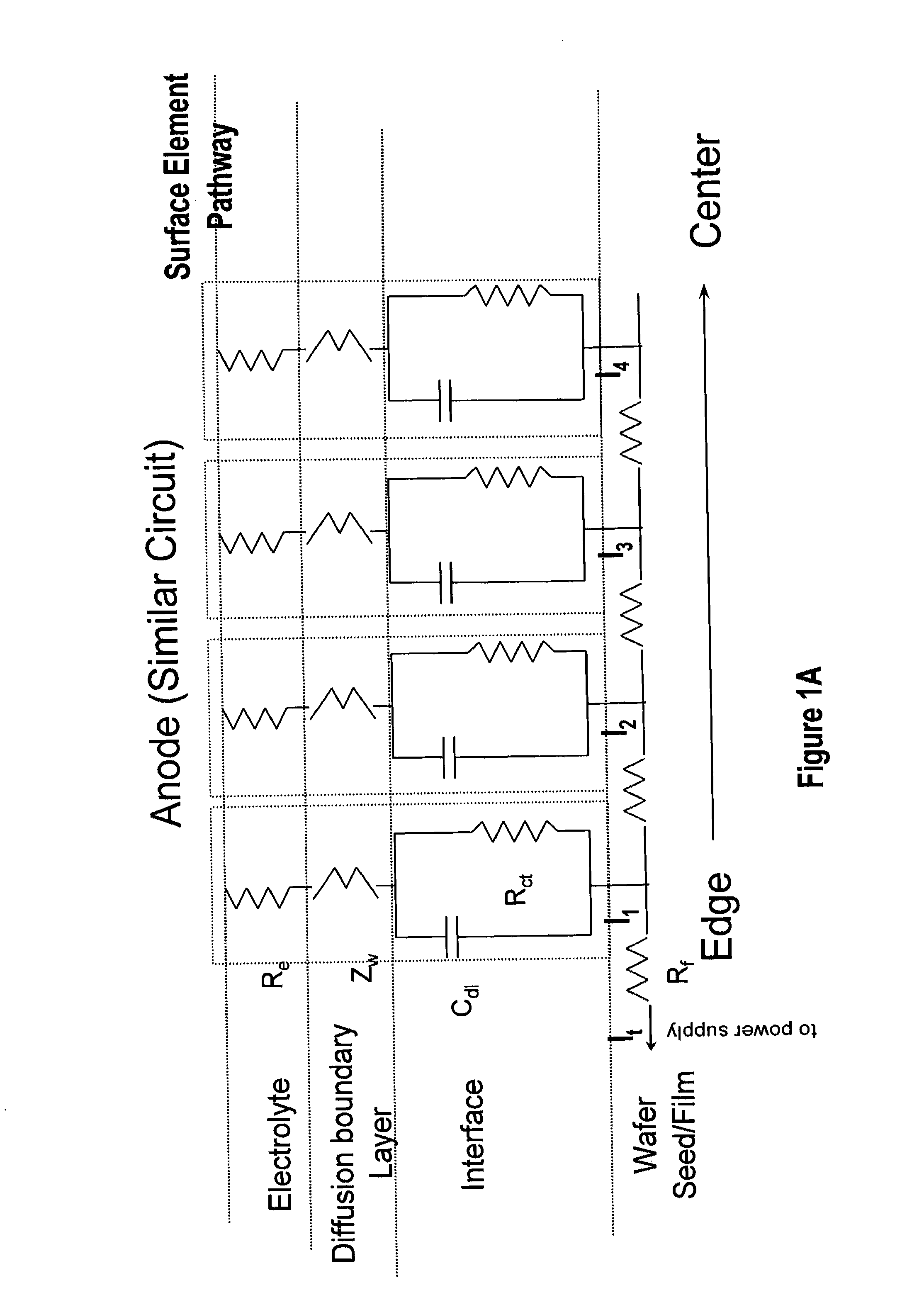Method and apparatus for electroplating
a technology of electroplating and surface treatment, which is applied in the direction of electrolysis components, electric circuits, manufacturing tools, etc., can solve the problems of extreme terminal effect situation, non-uniform thickness distribution of plating, and significant limitations of approaches related to physical properties of materials and processes, so as to improve plating uniformity
- Summary
- Abstract
- Description
- Claims
- Application Information
AI Technical Summary
Benefits of technology
Problems solved by technology
Method used
Image
Examples
Embodiment Construction
[0056]The present invention pertains to methods and apparatus for electroplating a substantially uniform layer of a metal onto a work piece having a seed layer thereon. This invention mitigates or eliminates the terminal problem by placing an ionically resistive element having a large number of isolated and unconnected ionically permeable through-holes (e.g., a resistive disc having multiple perforations allowing for passage of ions) in close proximity to the work piece, thereby dominating or “swamping” the overall system's resistance. The resistive element thus approximates a constant current source. By keeping the work piece close to the resistive element surface, the ionic resistance from the top of the element to the surface is much less than the ionic path resistance from the top of the element to the work piece edge, substantially compensating for the sheet resistance in the thin metal film and directing a significant amount of current over the center of the work piece. The im...
PUM
| Property | Measurement | Unit |
|---|---|---|
| diameter | aaaaa | aaaaa |
| thickness | aaaaa | aaaaa |
| thickness | aaaaa | aaaaa |
Abstract
Description
Claims
Application Information
 Login to View More
Login to View More - R&D
- Intellectual Property
- Life Sciences
- Materials
- Tech Scout
- Unparalleled Data Quality
- Higher Quality Content
- 60% Fewer Hallucinations
Browse by: Latest US Patents, China's latest patents, Technical Efficacy Thesaurus, Application Domain, Technology Topic, Popular Technical Reports.
© 2025 PatSnap. All rights reserved.Legal|Privacy policy|Modern Slavery Act Transparency Statement|Sitemap|About US| Contact US: help@patsnap.com



